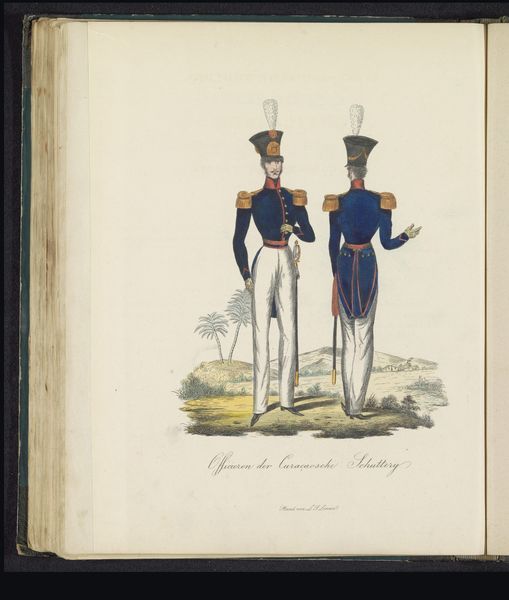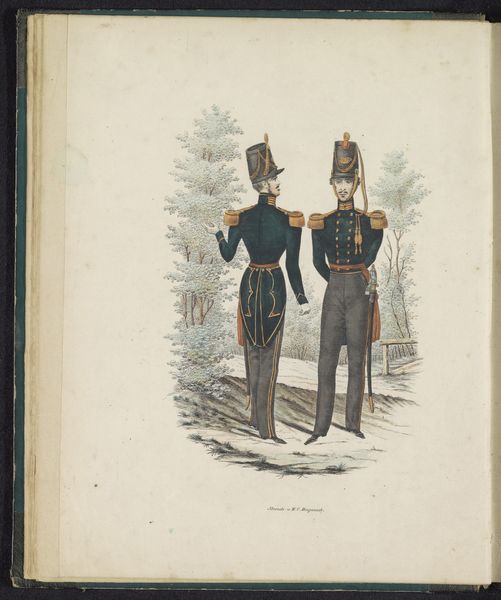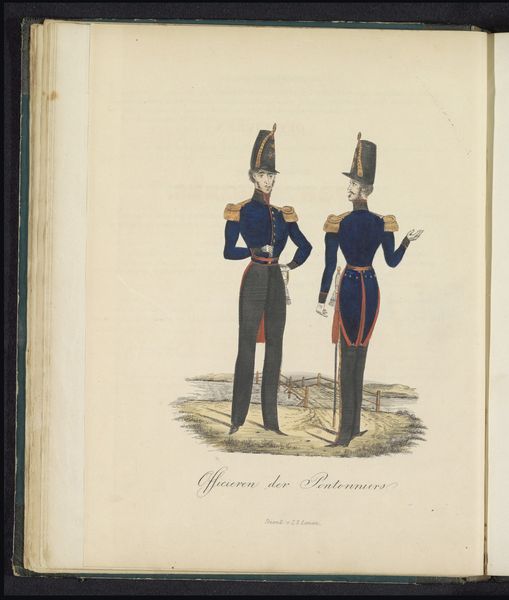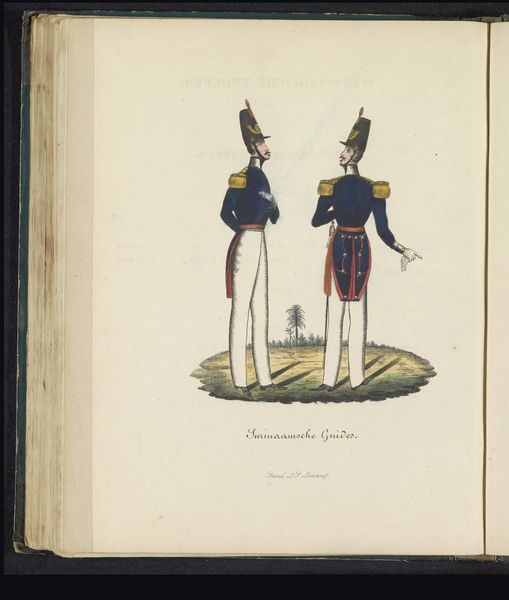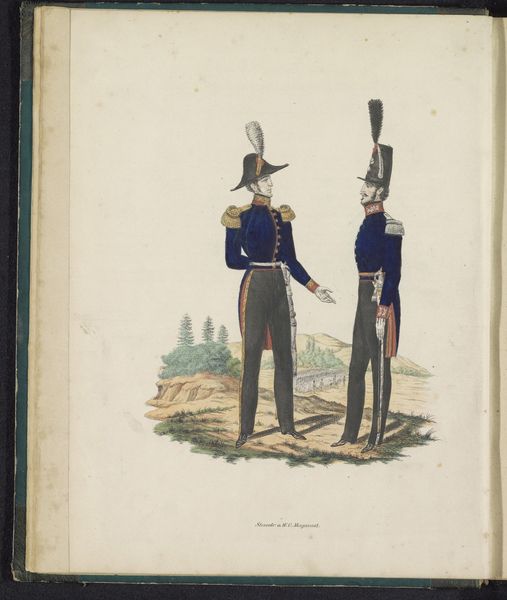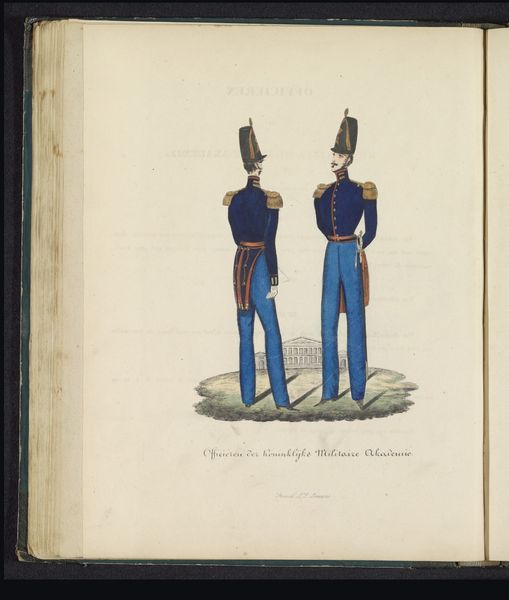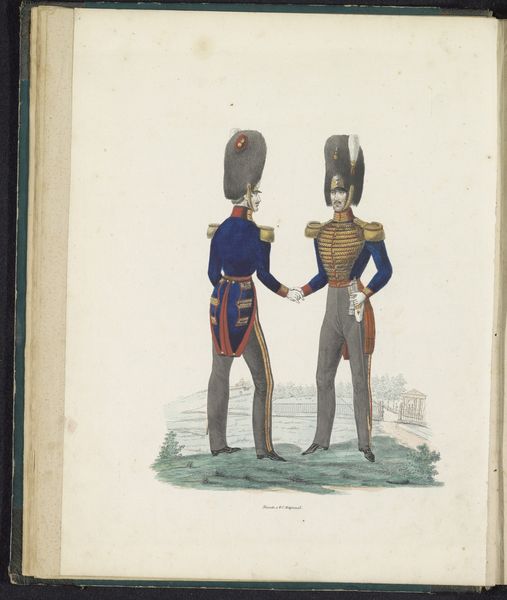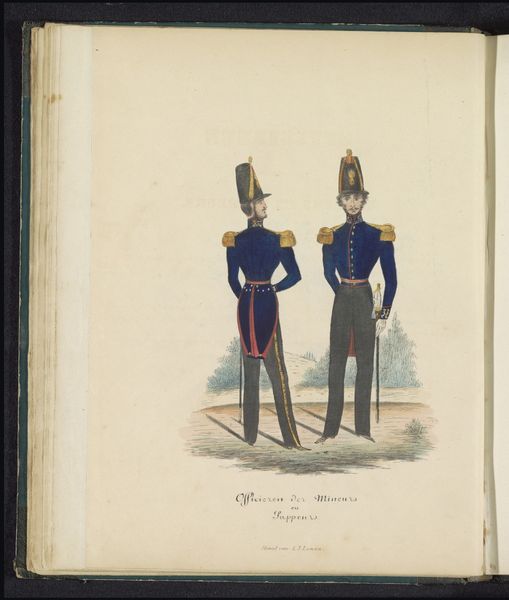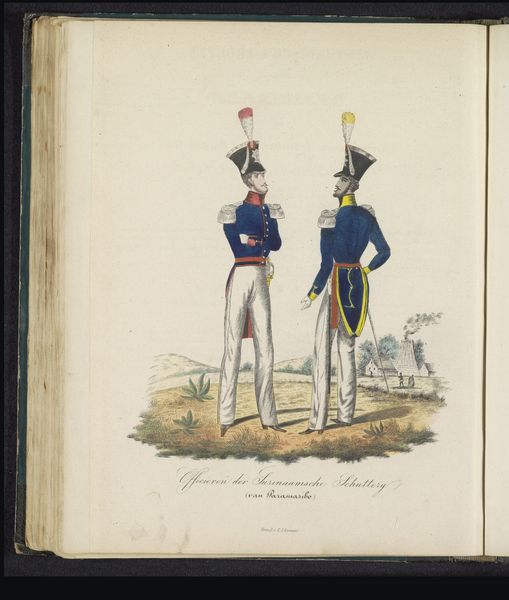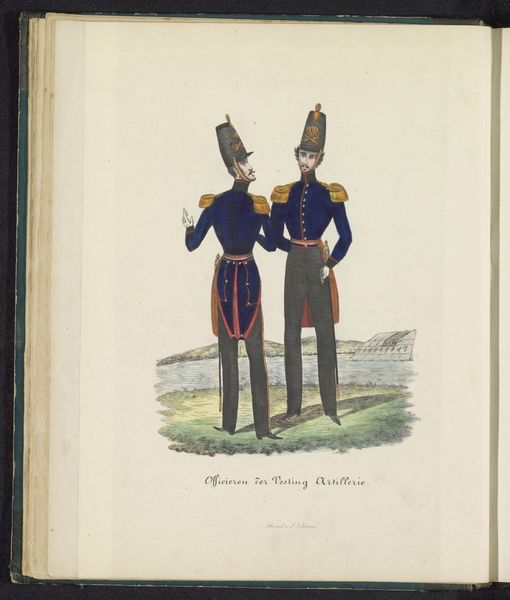
Uniform van de officieren van de jagers van de West-Indische troepen, 1845 1845
0:00
0:00
painting, watercolor
#
portrait
#
painting
#
watercolor
#
coloured pencil
#
genre-painting
#
history-painting
#
academic-art
#
watercolor
Dimensions: height 270 mm, width 200 mm
Copyright: Rijks Museum: Open Domain
Curator: This delightful watercolor by Louis Salomon Leman from 1845 depicts the "Uniform of the officers of the West-Indian Troops". It's a captivating look into 19th-century military fashion. Editor: My first impression? Stiff and somewhat sad. Those elongated figures, standing so formally on that tiny patch of… well, I guess it's supposed to be tropical soil. It all feels rather bleak and regimented. Curator: Regimented is spot on. Notice the details: the gold epaulettes, the tightly buttoned dark-green tunics, the perfectly white trousers. It’s a carefully constructed image of imperial authority and power. Editor: Yes, all meticulously rendered. And consider that dark-green against the bone-white pants; those palm trees are just afterthoughts. This imagery is interesting, it seems almost staged. I suppose the uniform serves as a costume to indicate that they are 'ready' for 'action', but they are on pause, suspended in the imagined space of possible war. Curator: Exactly. The uniform is both a practical garment and a potent symbol. The white trousers especially speak to a projection of cleanliness, of untainted dominance in a colonial context. Editor: Precisely. Cleanliness as a sign of civilization! It's loaded with assumptions and hidden messages. These images can perpetuate a vision of colonialism rooted in 'order'. This image is revealing something about the colonial mindset. Curator: It’s fascinating how such a seemingly straightforward depiction can unravel layers of social and political meaning. I find it interesting that these visual materials about war tend to be created during moments of relative calm. I suppose the intention is to create the effect of ‘preparation,’ regardless of whether these people ever see battle. Editor: It seems, then, we're not merely looking at clothing, but the symbols embedded within and transmitted through clothing, shaping colonial ideals and justifications. So much weight on those tailored shoulders. Curator: Indeed. This seemingly simple watercolor provides a complex, and even chilling, snapshot of a particular moment in history, with long tendrils that spread to present-day post-coloniality. Editor: And it reveals so much more than just a uniform; a ghost in the machine. It’s a testament to how even the most 'objective' of images are laden with ideology and how crucial it is to investigate their visual legacy.
Comments
No comments
Be the first to comment and join the conversation on the ultimate creative platform.




